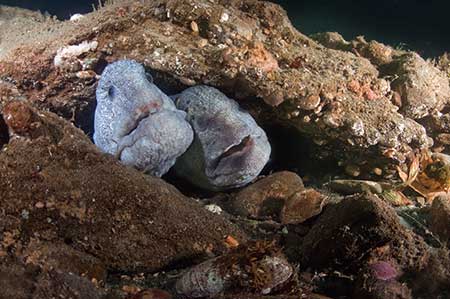

In the head region of LACM 128319, purplish matter in the sclerotic ring aperture of the left eye may represent remnants of the retina, as this tissue was presumably pressed down against the inner surface of the underlying scleral ossicles when the head collapsed during the decay of the carcass ( Figure 2A–C). Specimen photographed under normal light. Platecarpus tympaniticus, LACM 128319, upper Santonian–lowermost Campanian, Kansas, USA. Preserving a wide range of soft tissue structures, LACM 128319 is referred to as Platecarpus tympaniticus based on the following suite of distinguishing characters: (1) presence of well-developed median dorsal keel on frontal (2) presence of narrowly spaced anterolateral processes on frontal (3) lack of posteromedian flanges on frontal and (4) distal end of suprastapedial process (of quadrate) transversally expanded. Bonner (unfortunately, there is no date listed for when the fossil was collected however, it was accessioned to the museum in April 1969). It was in Logan County, in the upper Santonian to lowermost Campanian part of the stratigraphic column, that an exceptional mosasaur specimen (LACM 128319 Natural History Museum of Los Angeles County) was discovered by Marion C. Much of what we know about Platecarpus, and mosasaurs in general, is based on material recovered from the Smoky Hill Chalk Member of the Niobrara Chalk Formation in western Kansas, USA. The middle Coniacian–early Campanian (∼88–80 million years ago) russellosaurine Platecarpus is one of the most common mosasaur genera known from the Western Interior Basin of North America, and arguably a model taxon for understanding mosasaur paleobiology. Consequently, we have a limited understanding of how the mosasaur body plan, tail, and internal organs transformed as these reptiles evolved from semiaquatic dwellers to pelagic cruisers.
#WOLF EEL ADAPTATIONS SKIN#
Mosasaur skeletal remains are fairly abundant in marine deposits of Late Cretaceous age, but the direct fossil record of their soft parts is hitherto confined to a small number of specimens preserving patches of skin –, sternal cartilage, , and portions of the respiratory tube (calcified tracheal rings were initially mistakenly identified as a nuchal fringe ). These new data expand our understanding of convergent evolution among marine reptiles, and provide insights into their evolution's tempo and mode. Our study demonstrates that a streamlined body plan and crescent-shaped caudal fin were already well established in Platecarpus, a taxon that preceded Plotosaurus by 20 million years. Here we report on an exceptionally complete specimen (LACM 128319) of the moderately derived genus Platecarpus that preserves soft tissues and anatomical details (e.g., large portions of integument, a partial body outline, putative skin color markings, a downturned tail, branching bronchial tubes, and probable visceral traces) to an extent that has never been seen previously in any mosasaur.

Convergence with the specialized fusiform body shape and inferred carangiform locomotory style (in which only a portion of the posterior body participates in the thrust-producing flexure) of ichthyosaurs and metriorhynchid crocodyliform reptiles, along with cetaceans, has so far only been recognized in Plotosaurus, the most highly derived member of the Mosasauridae.

For the most part, they have been considered to be simple anguilliform swimmers – i.e., their propulsive force was generated by means of lateral undulations incorporating the greater part of the body – with unremarkable, dorsoventrally narrow tails and long, lizard-like bodies. Mosasaurs (family Mosasauridae) are a diverse group of secondarily aquatic lizards that radiated into marine environments during the Late Cretaceous (98–65 million years ago).


 0 kommentar(er)
0 kommentar(er)
